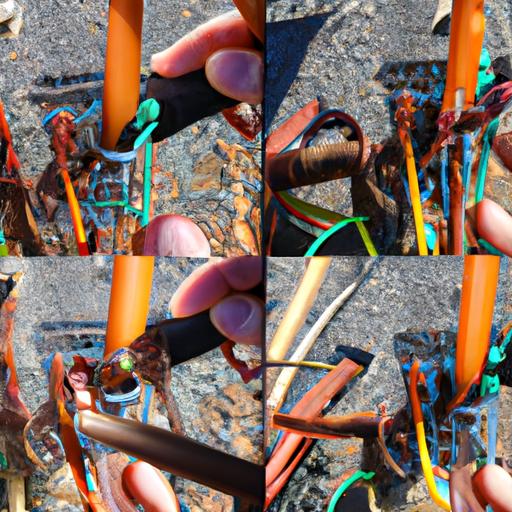In today’s world, electrical connections play a crucial role in our daily lives. One common component that ensures seamless connectivity is the cable wire. However, these wires are not immune to problems. If you’re experiencing issues with your cable wire, fear not! In this article, we will guide you through the process of fixing cable wire problems, empowering you to take matters into your own hands.

Understanding Cable Wire Problems
Before diving into the solutions, it’s essential to comprehend the various problems that can occur with cable wires. These issues can range from frayed wires and cuts to loose connections. Such problems often arise due to wear and tear, environmental factors, or improper installation techniques.
Tools and Materials Required
To successfully fix cable wire problems, you’ll need a few essential tools and materials. These include wire strippers, electrical tape, connectors, and a multimeter. Wire strippers help remove damaged insulation, while electrical tape and connectors aid in secure reconnection. The multimeter ensures you can test the repaired connection effectively.

Step-by-Step Guide on Fixing Cable Wire
Now that you have your tools ready, let’s walk through the step-by-step process of fixing common cable wire issues:
1. Assess the Problem
Begin by identifying the specific issue with your cable wire. Is it a cut wire, frayed insulation, or a loose connection? Understanding the problem will help you proceed with the appropriate repair technique.
2. Disconnect the Power Source
Safety should always be your top priority. Before getting your hands on the cable wire, make sure to disconnect the power source to avoid any potential electrical hazards.
3. Remove Damaged Wire Insulation
Using wire strippers, gently strip away the damaged insulation from the wire. Take care not to cut or damage the wire itself. Removing the damaged insulation will expose the conductive wire for further repair.
4. Trim and Rejoin Wires
Once the damaged insulation is removed, trim the wire ends to ensure clean and fresh connections. Depending on the situation, you can either use connectors or solder the wires back together. Ensure a secure and tight connection to guarantee proper functionality.
5. Insulate the Repaired Area
After successfully reconnecting the wires, it’s crucial to insulate the repaired area. This prevents any accidental contact with other conductive materials. Use electrical tape or heat shrink tubing to effectively insulate the repaired section, ensuring long-lasting results.
6. Test the Repaired Connection
Before wrapping up the process, it’s essential to test the repaired cable wire connection. Use a multimeter to check for continuity and ensure that the repair was successful. This step will give you peace of mind, knowing that your cable wire is in excellent working condition.
FAQ (Frequently Asked Questions)
Here are some common questions related to fixing cable wires, along with concise answers to address your concerns:
1. Can I fix a cable wire without any prior electrical knowledge?
While it is possible to fix simple cable wire issues with proper guidance, it is always recommended to have basic electrical knowledge. If you feel unsure or uncomfortable, it’s best to seek professional assistance.
2. What should I do if the cable wire is buried underground and damaged?
Underground cable wire repairs can be complex and potentially hazardous. It’s crucial to contact a professional electrician who has the expertise and tools required for such repairs.
3. How often should I inspect and maintain cable wires to avoid future issues?
Regular inspections are essential to identify any potential problems before they worsen. It’s recommended to inspect cable wires annually or whenever you notice any signs of damage or malfunction.
4. Can damaged cable wires pose any safety risks?
Yes, damaged cable wires can pose significant safety risks, including electrical shocks, short circuits, or even fires. Promptly addressing any cable wire issues is vital to ensure the safety of both individuals and property.
5. Are there any temporary fixes for cable wire problems?
While it’s always best to perform a proper repair, temporary fixes can be used in emergency situations. These include using electrical tape to temporarily hold damaged wires together until a permanent repair can be made.
Conclusion
Fixing cable wire problems is an essential skill for any DIY enthusiast. By following the step-by-step guide provided in this article, you can confidently repair common cable wire issues. Remember to prioritize safety by disconnecting the power source and seeking professional help if needed. By taking matters into your own hands and ensuring well-maintained cable wires, you can enjoy uninterrupted electrical connections in your home or workplace.